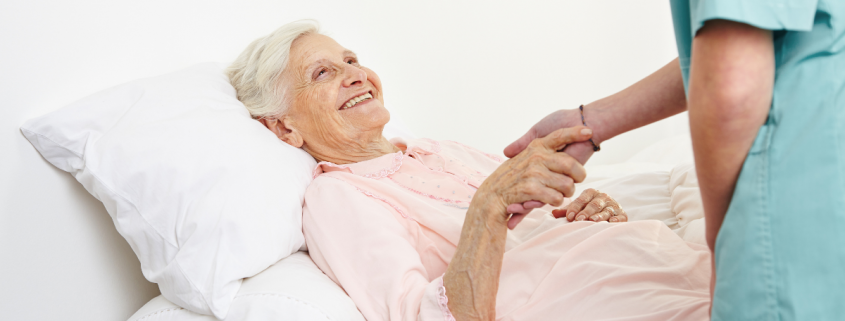Promoting Mobility and Circulation: Exercises and Techniques for Bedridden Care
Promoting mobility and circulation in bedridden individuals is crucial for their overall well-being. Read more to discover the exercises and techniques to improve the quality of life for bedridden individuals.
Bedridden individuals are required to stay in bed for as long as it takes them to recover from injury or illness. However, although being restricted to bed is an effective way to prevent further injuries and speed up recovery, it presents a few challenges for these individuals. Some of these challenges include:
- Increased risk of bedsores
- Muscle atrophy and weakness
- Joint stiffness and contractures
- Mental health issues
These challenges often worsen the situation for bedridden individuals. That is why mobility and circulation exercises are essential for enhancing their overall health and well-being. But what are some of the best practical exercises for bedridden individuals?
Top 3 Exercises for Bedridden Individuals
Range of Motion Exercises
Due to prolonged immobility, bedridden individuals often struggle to maintain joint flexibility and muscle strength. Range of motion exercises, also range of movement exercises, can help improve flexibility, reducing the risk of stiffness. It is essential to perform these exercises within the comfort of the individual. So, be as gentle and slow as possible while communicating with them how they feel about the extent of the exercises. Here are a few range of movement exercises for bedridden individuals.
Shoulder Circles
Shoulder circles are exercises to do in bed designed to improve flexibility and mobility in the shoulder joints. They help maintain upper body function and prevent stiffness. Here is how to perform shoulder circles;
- Sit or lie on your back with arms by your sides
- Lift your arms to shoulder level and make small circular motions with your shoulders
- Complete several clockwise and counterclockwise rotations in a controlled manner
Ankle Rotations
Ankle rotations are circulation exercises that help maintain flexibility and prevent swelling in ankle joints. Here is how to perform ankle rotations;
- Lie or sit with legs extended
- Rotate your ankles in circular motions in both directions
- Repeat the bed exercises several times, ensuring you complete the range of motion
Hip ROM
Hip ROM exercises are designed to maintain flexibility in hip joints, essential for activities including standing, walking and sitting. Here is how to perform these bed exercises;
- Lie on your back with legs extended
- Rotate your hips in circular motions
- Repeat the circle in a controlled manner for several repetitions
Breathing Exercises
Breathing exercises are designed to help improve circulation and lung function and minimise the risk of respiratory complications in bedridden individuals. They range from sitting to lying down exercises that involve slow, deep breathing to encourage oxygenation. Here are a few examples of breathing exercises:
Deep breathing
Deep breathing exercises involve taking deeper inhalations, which increases the amount of oxygen getting into the lungs. It aims to increase lung capacity and efficiency, encouraging better circulation and oxygenation;
- Lie or sit down
- Take a deep breath through the nose, allowing your diaphragm to expand
- Exhale slowly and completely through your mouth
Pursed-lip breathing
Pursed-lip breathing aims to promote better gas exchange and increased oxygenation of the blood. It does so by extending the exhale. Here is how to perform pursed-lip breathing exercise;
- Take a deep breath through your nose for two counts
- Purse your lips and exhale slowly and completely for four counts
- Repeat the exercise multiple times until you feel relaxed
Box breathing
Box breathing is one of the exercises to do in bed to maintain a balance between oxygen and carbon dioxide levels in the blood. It helps promote a sense of calm, which improves circulation by reducing stress. Here is how to perform box breathing;
- Take a deep breath through your nose and hold it in for a count of four
- Exhale slowly and completely for a count of four
- Pause and hold your bread for a count of four, then repeat the cycle
Passive Exercises
Passive exercises refer to bed exercises and stretches performed on an individual by an external force. The external force can be a therapist, caregiver or mechanical device to assist the bedridden individual in moving joints and muscles. Unlike active exercises, these are perfect for individuals with limited mobility because they are less intensive and low-impact.
Here are a few examples of passive exercises;
Should Flexion/Extension
- While the individual is sitting or lying down, lift their hand from the wrist
- Hold the arm up for a second or two and slowly bring it down
- Repeat the steps several times before moving to the other arm
Wrist Flexion/Extension
- Hold the individual’s wrists and move upward and downward
- Keep the movements controlled and repeat for both wrists
Hip Adduction/Abduction
- Ask the individual to lie down, move their leg outward and inward gently
- Hold their leg from the ankle to make the movements more comfortable
- Repeat the exercise several times before moving to the other leg
How to Help Bedridden Individuals Change Position in Bed
Besides bed exercises, changing the positions of bedridden individuals is crucial to improving circulation, preventing bedsores and maintaining overall comfort. Unfortunately, changing their position can be relatively challenging because of health conditions, mobility challenges and physical state. Here are a few tips and techniques you can use to help these individuals change their positions safely;
- Ask for assistance from a caregiver or health professional to ensure maximum support and minimise the risk of injury.
- Ensure you communicate with the individual throughout the process. Inform them of the plan and how you want to execute it.
- Utilise pillows and additional support to ensure maximum comfort as you help them turn. For instance, place a pillow between their knees before turning them to their side to alleviate pressure from their joints and hips.
The use of assistive devices, such as mechanical beds, helps make the turns a lot easier. Remember to reposition the patient every 2 hours, or as frequently if needed, to relieve pressure in specific body areas and prevent pressure sores. Contact Veritas Care today for more information on lying down exercises and complete care assessment for bedridden individuals.















